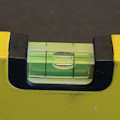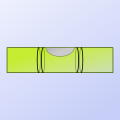Using a Yocto-Watt as energy meter
![]() The Yocto-Watt is a small module which is very convenient to measure by USB the voltage, the current, and the instantaneous real power of an electric circuit. As it is also able to integrate the power to compute the total energy for a given lapse of time, some users also employ it to measure the energy that a system consumes, and we have recently improved this feature.
The Yocto-Watt is a small module which is very convenient to measure by USB the voltage, the current, and the instantaneous real power of an electric circuit. As it is also able to integrate the power to compute the total energy for a given lapse of time, some users also employ it to measure the energy that a system consumes, and we have recently improved this feature.
| No comment yet | Read more... |
Infrared temperature measure: myth and reality
 As several countries are starting to alleviate the containment rules, we are receiving many requests concerning our infrared temperature sensor, the Yocto-Temperature-IR. Indeed, the possibility to quickly and without contact detect people who may be sick seems interesting. But is it as easy as it seems?
As several countries are starting to alleviate the containment rules, we are receiving many requests concerning our infrared temperature sensor, the Yocto-Temperature-IR. Indeed, the possibility to quickly and without contact detect people who may be sick seems interesting. But is it as easy as it seems?
| No comment yet | Read more... |
Inclinometer tests
 For some applications, the Yocto-3D and the Yocto-3D-V2 can be used as inclinometers, as they can estimate their spatial orientation. But you may have noticed that we don't provide any accuracy information on the inclination measure in the specifications. To know more, we are going to compare these two modules today with the Murata SCL3300 precision inclinometer that we interfaced last week with a Yocto-SPI.
For some applications, the Yocto-3D and the Yocto-3D-V2 can be used as inclinometers, as they can estimate their spatial orientation. But you may have noticed that we don't provide any accuracy information on the inclination measure in the specifications. To know more, we are going to compare these two modules today with the Murata SCL3300 precision inclinometer that we interfaced last week with a Yocto-SPI.
| No comment yet | Read more... |
Querying an SPI sensor automatically
 After last week's post on how to query an SPI sensor by explicitly managing SPI communications using the Yoctopuce library, we are now going to show how the Yocto-SPI can make your life even easier, and above all simplify the code of the application.
After last week's post on how to query an SPI sensor by explicitly managing SPI communications using the Yoctopuce library, we are now going to show how the Yocto-SPI can make your life even easier, and above all simplify the code of the application.
| No comment yet | Read more... |
I2C : pressure sensor and water level
![]() Thanks to the new Yocto-I2C one can basically interface any I2C device, but one can also simply use it to test any I2C device. This week we decided to use this possibility to play with Amphenol's DLHR pressure sensors.
Thanks to the new Yocto-I2C one can basically interface any I2C device, but one can also simply use it to test any I2C device. This week we decided to use this possibility to play with Amphenol's DLHR pressure sensors.
| No comment yet | Read more... |


